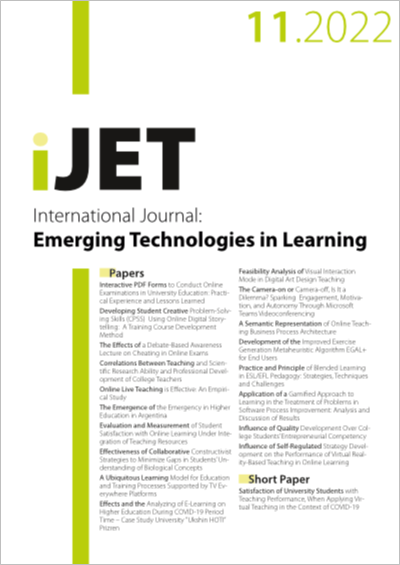Feasibility Analysis of Visual Interaction Mode in Digital Art Design Teaching
DOI:
https://doi.org/10.3991/ijet.v17i11.32033Keywords:
visual interaction (VI), digital art design (DAD), feasibility analysisAbstract
The visual presentation of teaching contents facilitates students to master the relevant knowledge and skills of digital art design (DAD). The existing studies focus on the construction of traditional classroom teaching and interaction strategies, but rarely tackle the visual interaction (VI) technology of synchronous online classroom. This paper analyzes the feasibility of VI mode in DAD teaching. Firstly, the authors detailed the realization steps for teacher-student VI in the DAD teaching process control platform, and constructed the topology of VI system in DAD teaching. After a data analysis on VI flow, the authors parsed the VI flow data, and encoded the teacher-student VI involved in DAD teaching. Based on the improved neural network, a model was established to predict the degree of realization for course goals of DAD teaching. Through experiments, the teacher-student VI in DAD teaching was described statistically, and the relevant analysis results were obtained, which verify the effectiveness of our prediction model.
Downloads
Published
How to Cite
Issue
Section
License
Copyright (c) 2022 Nan Zhang (Submitter); Jiwen Zhang

This work is licensed under a Creative Commons Attribution 4.0 International License.



